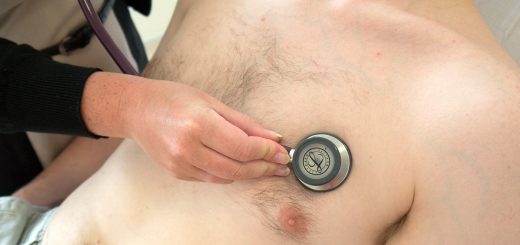What is Congestive Heart Failure (CHF)?
Approximately 4.6 million people in the US are affected by congestive heart failure (CHF). First aiders and first responders may encounter a patient with CHF. In this blog post we’ll look at CHF in more detail.
Left or right-sided failure?
There are two types of heart failure based on which side of the heart is affected: right-sided heart failure and left-sided heart failure. The right side of the heart receives the oxygen-poor and carbon dioxide-rich blood from the body and pumps it to the lung where it can pick up a fresh supply of oxygen and eliminate the waste product carbon dioxide. The blood then flows from the lung to the left side of the heart, which subsequently pumps the freshly oxygenated blood to the body.
Left sided heart failure occurs when there is decreased ability of the heart muscle to contract. The heart cannot generate enough force to pump a sufficient amount of blood into the circulation. Instead of being pumped out, the excess blood remaining in the left side of the heart can back up into the lungs and cause fluid to leak into the lungs. This results in congestion of the lungs (hence the term “congestive heart failure”) and impairs the ability of the lung to perform its functions. Right sided heart failure occurs when the right side of the heart fills incorrectly. In this case, blood backs up in the veins and swelling (edema) tends to occur in the legs and ankles, although congestion of the lungs is possible.
Nondrug treatment for CHF
In some forms of heart failure, the initial event is an increased demand by the body for more oxygen, and not from failure of the heart muscle itself. The heart tries to compensate for the increased need by working harder (pumping faster, increasing in size to generate more force, etc.). This can occur, for example, in people with hyperthyroidism (where the metabolic rate is increased) or in severe anemia (where the blood has insufficient oxygen carrying capacity). At some point, the heart is unable to meet the increased oxygen demands and heart failure occurs.
These cases are treated by correcting the underlying problem. Heart failure may be associated with a defect in one of four valves, which are portions of the heart that control the direction of blood flow through the four chambers of the heart. Valve defects are generally corrected by surgery. Heart transplants are sometimes performed in people who fail to respond to traditional therapy. In these cases, the suitable candidate must wait until an appropriate donor heart is available.
Drug treatment
A portion of the nervous system referred to as the sympathetic nervous system is stimulated in heart failure due to the decrease output of the heart. The sympathetic nervous system generally causes an excitatory effect in response to perceived danger or other stress. A hormone that is often associated with the sympathetic nervous system is adrenalin, i.e., norepinephrine. The sympathetic nervous system tries to compensate for the decreased output of the heart in heart failure by retaining salt and water, increasing the heart rate, and constricting blood vessels. Although these effects may compensate for a period of time, in the long run, they are detrimental.
Depending upon the nature of the problem that has led to the heart failure, different drugs are used to increase the force of contraction generated by the heart, decrease excess water, increase blood flow or dilate (widen) blood vessels.






Congestive heart failure is when the heart can not generate enough force to pump sufficient amount of blood into the circulation